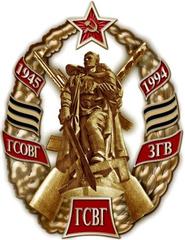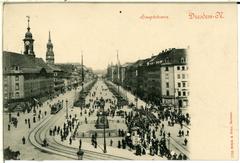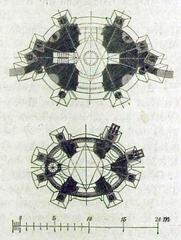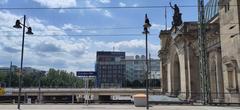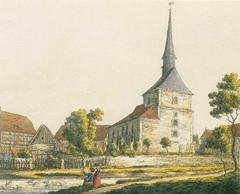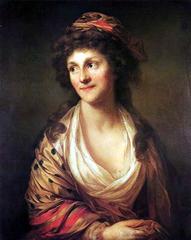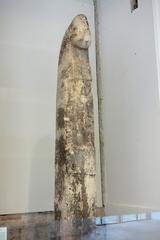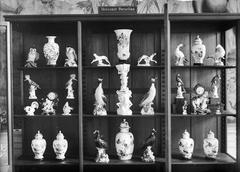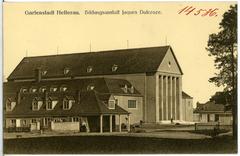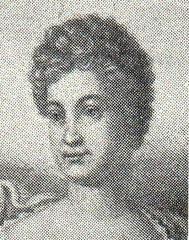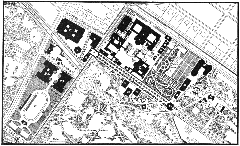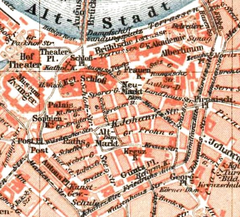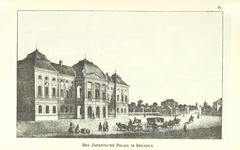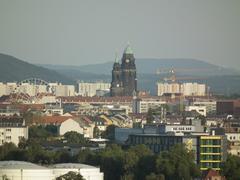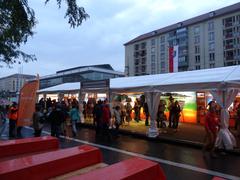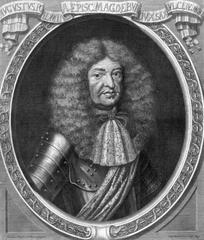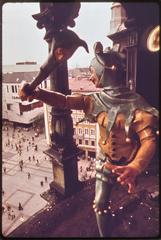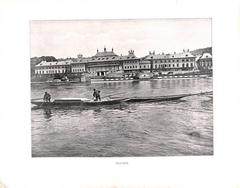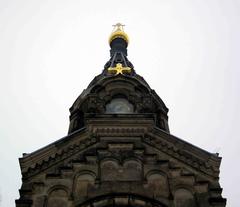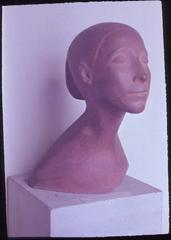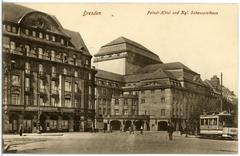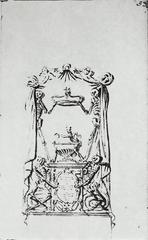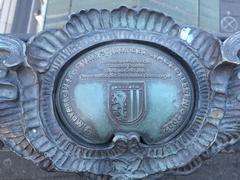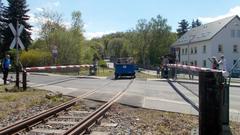Pieschen-Süd, Dresden, Germany: Visiting Hours, Tickets, and Historical Sites Guide
Date: 04/07/2025
Introduction
Pieschen-Süd, located in the northwestern part of Dresden, Germany, harmoniously blends centuries-old heritage with a modern urban lifestyle. With roots dating back to the Sorbian village “Pesczen” in 1292, the district has evolved from a humble fishing village along the Elbe River into a vibrant area known for its distinctive architecture, lively festivals, and accessible attractions. This comprehensive guide provides detailed insights into Pieschen-Süd’s history, visiting hours, ticket information, accessibility, travel tips, and must-see sites to help you make the most of your visit.
For official planning resources, visit Dresden.de and the local district portal dresdner-stadtteile.de.
Contents
- Opening Hours and Admission
- Getting There and Accessibility
- Guided Tours
- Festivals and Events
- Visitor Tips
- Frequently Asked Questions (FAQ)
- Highlight: Visiting the Markuskirche
- Exploring Pieschen-Süd: Sites and Experiences
- Visiting the Blue Wonder (Blaues Wunder) Bridge
- Summary and Next Steps
- References
Historical Overview
Early History and Origins
Pieschen-Süd’s history stretches over 700 years, first mentioned in 1292 as the Sorbian village “Pesczen” (Wikipedia: Pieschen). Originally a fishing and agricultural settlement on the Elbe, it remained modest due to its sandy soils and limited yields. Residents relied on fishing, farming, fruit and wine cultivation, and beekeeping well into the 19th century (Wikipedia: Pieschen).
19th Century: Industrial Transformation
The arrival of Germany’s first long-distance railway in 1839 and the construction of the Pieschener Hafen (1859) ushered in rapid industrialization (Dresdner Stadtteile). Factories, such as a major locomotive works, spurred population growth from 347 in 1834 to over 12,000 by 1890, resulting in the signature three-story apartment blocks that still define the area (Wikipedia: Pieschen).
Incorporation and Urbanization
In 1897, Pieschen was incorporated into Dresden, transforming into a bustling urban district with new housing, social infrastructure, and the Bürgerstraße as its new center. The original village core, Altpieschen, receded in prominence (Wikipedia: Pieschen).
Religious and Social Infrastructure
Pieschen became an independent parish in 1884. Significant religious landmarks include the neo-Gothic Markuskirche (1886–1888) and St. Josef Kirche, both reflecting the community’s diverse cultural and religious life (Dresdner Stadtteile).
Transportation and Infrastructure
Transport developed rapidly: a horse-drawn tram was introduced in 1882, electrified by 1899, and is now complemented by several tram and bus lines and the S-Bahn station Dresden-Pieschen. The Leipziger Straße connects Pieschen-Süd to Dresden’s center and major highways (Wikipedia: Pieschen).
20th Century: War, Reconstruction, and Renewal
World War II caused significant damage, but post-war reconstruction preserved much of the district’s historic character. After reunification, Pieschen became Dresden’s second-largest urban renewal area, with efforts focused on preserving its rental housing stock and repurposing former industrial sites (Wikipedia: Pieschen).
Culture and Traditions
Annual events like the Pieschner Hafenfest (since 1997) and St. Pieschen festival celebrate local culture, while venues like the Pieschener Hafenhaus host concerts and exhibitions. The local library, opened in 1930, remains a community hub (Dresdner Stadtteile).
Modern Day
Today, Pieschen-Süd combines preserved historic architecture with modern amenities, excellent infrastructure, proximity to the Elbe, and shopping centers like the Elbcenter, making it popular with young families and creatives (Wikipedia: Pieschen; Dresdner Stadtteile).
Sehenswürdigkeiten und Highlights
- Markuskirche: Neo-Gothic Protestant church with impressive architecture.
- St. Josef Kirche: 19th-century neo-Gothic Catholic church.
- Pieschener Hafenhaus: Cultural center hosting events and exhibitions.
- Robert-Matzke-Straße & Altpieschen: Remnants of the original village, with half-timbered houses and cobbled streets.
- Elberadweg: Popular riverside cycling and walking route.
- Parks and Green Spaces: Tranquil areas for relaxation and family activities.
Visitor Information
Opening Hours and Admission
- District Sites: Pieschen-Süd is open and accessible at all times.
- Markuskirche: Open Tuesday–Sunday, 10:00–17:00; free entry; guided tours weekends at 11:00 and 15:00.
- St. Josef Kirche: Hours vary; services are public.
- Pieschener Hafenhaus: Open per event schedule; admission varies.
- Pieschner Rathaus: Monday–Friday, 8:00–18:00; free entry.
- Straßenbahnmuseum Dresden: Saturdays and Sundays, 10:00–17:00; adults €5, children €3 (6–15), under 6 free.
Getting There and Accessibility
- Public Transport: Tram lines 4, 10 (and others), bus lines, and S-Bahn S1 (Dresden-Pieschen) provide easy access (DVB).
- Parking: Available near major sites; some spaces designated for those with disabilities.
- Accessibility: Most attractions, churches, and promenades are wheelchair accessible; verify details before your visit.
Guided Tours
Local operators and the district office offer guided tours covering Pieschen-Süd’s history, architecture, and cultural sites. Booking in advance is advised, especially for group tours.
Festivals and Events
- Pieschner Hafenfest: Annual harbor festival in early June, featuring music, food, and family activities.
- St. Pieschen: Summer street festival with concerts and art.
- Museum and Church Events: Regular concerts and special exhibitions; check local listings for details.
Visitor Tips
- Explore both the historic Altpieschen and the lively Bürgerstraße.
- Cycle or stroll along the Elberadweg for panoramic Elbe views.
- Visit local cafés and markets for regional specialties.
- Respect quiet hours and local customs.
- Spring and early autumn are ideal for visiting due to mild weather and frequent events.
Frequently Asked Questions (FAQ)
Q: Is Pieschen-Süd free to visit?
A: Yes, the district itself and most outdoor sites are free. Some museums, guided tours, or special events may charge admission.
Q: Are there parking facilities?
A: Yes, parking is available near main attractions, including accessible spots.
Q: Is the area wheelchair accessible?
A: Most public spaces, promenades, and key attractions are accessible, but confirm specifics with individual venues.
Q: Are guided tours available?
A: Yes, contact local providers or the district office to arrange tours.
Q: Which public transport serves Pieschen-Süd?
A: Tram lines 4, 10, several bus lines, and S-Bahn S1.
Highlight: Visiting the Markuskirche
Overview
The Markuskirche, built in the late 19th century, is a neo-Gothic masterpiece and a cultural anchor for Pieschen-Süd. Its ornate architecture, stained glass windows, and historic organ are highlights for visitors. Entry is free, and the site is fully accessible. Guided tours are available on weekends and can be booked via Dresden’s official tourism site.
Nearby Attractions
- Leipziger Straße: Lined with local shops, cafés, and markets.
- Elbe Meadows: Walking and cycling paths along the river.
- Josephskirche: Another historic church nearby.
Exploring Pieschen-Süd: Sites and Experiences
Pieschner Rathaus (Town Hall)
A striking Neorenaissance building hosting local administration and community events. Open weekdays, with guided architecture tours by appointment (so-lebt-dresden.de).
Historic Village Core: Altpieschen
Preserved half-timbered houses, cobbled lanes, and historical plaques offer a glimpse of Pieschen-Süd’s rural origins.
Pieschener Hafen (Harbor)
A revitalized riverside area hosting the annual Hafenfest and providing open spaces for recreation and events.
Straßenbahnmuseum Dresden
Showcasing Dresden’s tram history with exhibits, vintage cars, and special event rides (weekends; admission charged).
Culinary Scene
- Mashariki: East African cuisine.
- Petit Frank: French bistro fare.
- China Restaurant Sonne: Classic Chinese dishes.
- &Rausch: Café and bar, open all day.
Shopping
- Elbcenter Pieschen: Shopping complex with local vendors.
- Flea Markets: Held on weekends, free to browse.
Parks and Green Spaces
Green areas and playgrounds offer family-friendly relaxation throughout the district.
Transportation
Trams, buses, and the S-Bahn make Pieschen-Süd easily accessible; cycling and walking are popular ways to explore the area.
Visiting the Blue Wonder (Blaues Wunder) Bridge
Introduction
The Blue Wonder (Blaues Wunder), officially Loschwitz Bridge, is an engineering marvel from 1893, renowned for its steel construction and vibrant color. Spanning the Elbe, it connects Blasewitz and Loschwitz, and is easily reached from Pieschen-Süd via tram or the Elberadweg cycle route (Official Dresden Tourism - Blue Wonder Bridge).
Visiting Details
- Open: 24/7; free to walk or cycle across, no tickets required.
- Accessibility: Sidewalks and bike lanes; some adjacent paths may be uneven.
- Nearby Attractions: Loschwitz district, Villa Stockhausen, Elbe river cruises.
- Photography: Best at sunrise or sunset from the riverbanks or nearby hills.
- Events: Hosts concerts and city festivals, especially in summer.
Summary and Next Steps
Pieschen-Süd offers a unique blend of history, cultural vibrancy, and modern amenities. From the neo-Gothic Markuskirche and lively Pieschner Hafenfest to scenic Elbe walks and the iconic Blue Wonder bridge, the district caters to history buffs, families, and urban explorers alike. With good public transport, accessible sites, and a year-round program of events, Pieschen-Süd is a must-see for anyone seeking Dresden’s authentic charm.
Plan your visit with official resources (Dresden.de), download the Audiala app for interactive tours, and follow local updates to make the most of your experience.
References
- Wikipedia: Pieschen
- Dresdner Stadtteile: Pieschen
- So lebt Dresden: Pieschen
- Official Dresden Tourism - Markuskirche
- DVB Public Transport Dresden
- Official Dresden Tourism - Blue Wonder Bridge
- Elbe Cycle Route
- Dresden Events Calendar
Image alt text examples:
- “Markuskirche in Pieschen-Süd, Dresden”
- “Neogothic St. Josef Kirche in Pieschen-Süd”
- “Kulturzentrum Pieschener Hafenhaus in Dresden”
- “The Blue Wonder (Blaues Wunder) steel bridge over the Elbe River in Dresden with blue sky background”
Interactive Map: Pieschen-Süd on Google Maps
